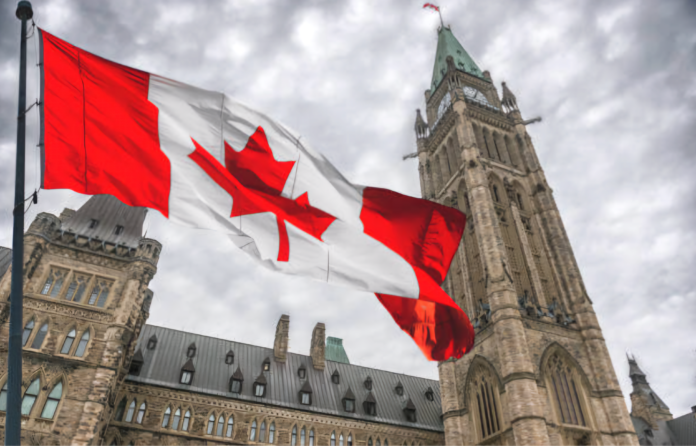Canada, with its vast and diverse landscapes, is endowed with an abundance of raw materials that are crucial to its economy. Each province plays a unique role in contributing to the country’s wealth of mineral raw materials, agricultural products, and fossil fuels. Here’s a detailed look at the provinces and their key raw materials:
1. British Columbia
Mineral Raw Materials: British Columbia is a major producer of copper, gold, silver, and metallurgical coal. The province’s mining industry thrives in areas like the Kootenays and Northern BC, which are rich in these valuable minerals.
Agricultural Raw Materials: BC’s diverse climate supports a variety of crops, including berries, grapes (for wine production), and vegetables. The province also has a robust livestock sector.
Fossil Fuel Raw Materials: While not as dominant as in some other provinces, BC does produce some natural gas, primarily from its northeastern regions.
2. Alberta
Mineral Raw Materials: Alberta is known for its oil sands, which contain significant amounts of bitumen. The province also has deposits of natural gas, particularly in the northeastern part of the province.
Agricultural Raw Materials: Alberta’s fertile plains are ideal for crops like wheat, barley, canola, and pulses. The province is also a major producer of beef and pork.
Fossil Fuel Raw Materials: Alberta’s oil sands and conventional oil reserves are central to its economy. The province is a leading producer of crude oil and natural gas in Canada.
3. Saskatchewan
Mineral Raw Materials: Saskatchewan is a global leader in potash production, essential for fertilizers. The province also has significant uranium deposits, used for nuclear power.
Agricultural Raw Materials: The province’s vast prairies are ideal for growing wheat, canola, barley, and lentils. Saskatchewan is a major player in global agricultural markets.
Fossil Fuel Raw Materials: Saskatchewan produces some coal, used primarily for power generation, and has oil production, though not as significant as Alberta.
4. Manitoba
Mineral Raw Materials: Manitoba is known for its nickel and copper deposits, particularly in the Thompson Nickel Belt. The province also mines zinc and has some gold production.
Agricultural Raw Materials: Manitoba produces a range of crops, including wheat, canola, and soybeans. The province also supports livestock farming.
Fossil Fuel Raw Materials: Manitoba’s fossil fuel resources are limited, with some oil production and minor natural gas production.
5. Ontario
Mineral Raw Materials: Ontario is a major producer of gold, nickel, and platinum group metals. The province’s mining sector is diverse, with significant operations in the northern parts of the province.
Agricultural Raw Materials: Ontario produces a variety of crops, including corn, soybeans, and vegetables. The province also supports a significant dairy and poultry industry.
Fossil Fuel Raw Materials: Ontario has some oil and natural gas production, but it is less significant compared to Western Canada. The province relies more on hydroelectric power and nuclear energy.
6. Quebec
Mineral Raw Materials: Quebec is rich in minerals, including gold, iron ore, and rare earth elements. The province’s mining industry is extensive, contributing to its economic strength.
Agricultural Raw Materials: Quebec’s agriculture includes a wide range of products, such as corn, soybeans, and maple syrup. The province also has a significant dairy industry.
Fossil Fuel Raw Materials: Quebec’s fossil fuel production is relatively modest, with some oil and natural gas production. The province relies heavily on hydroelectric power for its energy needs.
7. New Brunswick
Mineral Raw Materials: New Brunswick’s mining sector includes lead, zinc, and potash. The province also has some gypsum and salt production.
Agricultural Raw Materials: The province supports agriculture with crops such as potatoes and various vegetables, as well as a growing livestock sector.
Fossil Fuel Raw Materials: New Brunswick produces some natural gas and has a small oil industry. The province also relies on imported fossil fuels for its energy needs.
8. Nova Scotia
Mineral Raw Materials: Nova Scotia has a small but diverse mining sector, including gypsum, salt, and some gold production.
Agricultural Raw Materials: The province produces a range of crops, including fruits and vegetables, and has a notable seafood industry, particularly for shellfish.
Fossil Fuel Raw Materials: Nova Scotia has some coal production and relies on imported oil and natural gas for its energy needs.
9. Prince Edward Island
Agricultural Raw Materials: PEI is renowned for its potatoes, which are a major crop. The province also produces grains, dairy products, and livestock.
Mineral Raw Materials: PEI has limited mineral resources and mining activities.
Fossil Fuel Raw Materials: The province relies on imported fossil fuels for its energy needs, with no significant production of oil or natural gas.
10. Newfoundland and Labrador
Mineral Raw Materials: Newfoundland and Labrador are known for their iron ore, nickel, and copper deposits. The province also has significant gold production.
Agricultural Raw Materials: Agriculture is limited by the province’s climate, but it produces some vegetables, dairy, and seafood.
Fossil Fuel Raw Materials: The province has substantial offshore oil reserves, with production from fields like Hibernia and Terra Nova. It also has some natural gas production.
Conclusion
Canada’s provinces are each endowed with distinct natural resources that contribute to the nation’s economic prosperity. From the rich mineral deposits of Ontario and Quebec to the fossil fuel reserves of Alberta and Newfoundland and Labrador, and the agricultural abundance across the prairies and Atlantic regions, these resources are integral to Canada’s role on the global stage. Sustainable management and innovation in utilizing these resources are essential for maintaining economic growth and environmental stewardship for future generations.









